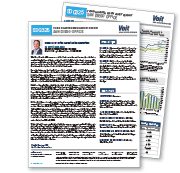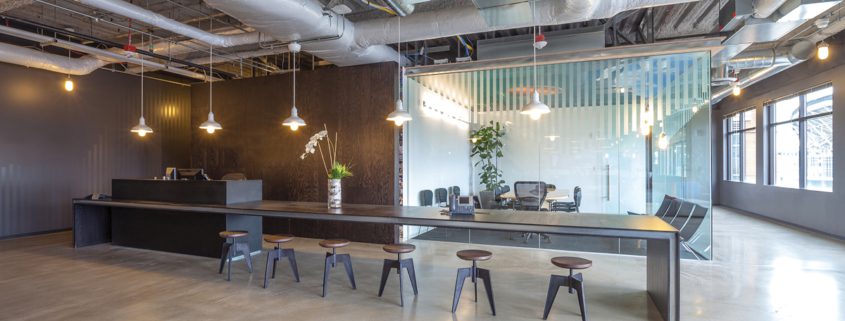Office Update: SoCal Office Leasing Markets a Mixed Bag
There is growing momentum in the office leasing market nationwide, with many markets seeing significant reductions in vacancy rates. In its September report, Yardi Matrix states that the national office vacancy rate stood at 18.7% as of August—down 80 basis points over the past 12 months. While that’s good news for the CRE industry, enthusiasm for office space hasn’t spread equally across all U.S. metros.
New York City, Dallas/Ft. Worth, Phoenix, Charlotte, Houston, and even San Francisco—which once had one of the highest post-pandemic vacancy rates in the U.S. (over 30%)—returned to positive absorption for the quarter. On the downside, Boston, Washington, D.C., and Chicago all suffered from negative absorption and lingering high vacancy rates. In Southern California, the office markets are a mixed bag. Los Angeles remains relatively flat, despite 10.5 MSF of leases signed in 2025. Voit recently released our Q3 office reports for Orange County and San Diego. While net absorption for OC was a positive 415,296 SF, San Diego registered negative absorption of nearly 0.25 MSF (-232.683).
Trends in the U.S. Office Market
Before we dive deeper into our markets, let’s look at the national picture.
Flight to Quality
The “flight to quality” continues to be the trend in the U.S. office market in Q3 2025. Tenants overwhelmingly favor new, high-quality, amenity-rich buildings (Class A or Trophy assets) while older, less-amenitized properties (Class B and C) have struggled since emerging from the pandemic. Top-tier office buildings have actually achieved modest rent increases since 2023, whereas rents for Class B/C buildings are falling. Base rents on new leases in Class A/A+ properties rose about 3% in 2024, while lower-tier properties fell by nearly 6%, according to a recent study.
It remains to be seen whether investors acquiring assets at steep discounts in prime locations can revitalize Class B and C properties by incorporating hospitality-style design upgrades, premium wellness and sustainability features, and tech integrations offered in the newer, Class A office product.
Office Conversions
 As we wrote in a previous blog post this past summer, conversions of office to residential and other asset classes are gaining traction. Over 23 MSF of office space was scheduled for conversion or demolition in 2025, according to Propmodo. If the trend continues, the reduction in inventory will help to stabilize the market.
As we wrote in a previous blog post this past summer, conversions of office to residential and other asset classes are gaining traction. Over 23 MSF of office space was scheduled for conversion or demolition in 2025, according to Propmodo. If the trend continues, the reduction in inventory will help to stabilize the market.
Minimal New Construction
The construction pipeline has fallen dramatically in 2025.
This severe constraint on new supply is a primary driver for the expected long-term decline in vacancy rates. Total office space under construction nationally plunged by nearly 44% from early 2024 to early 2025, according to Commercial Edge, with only about 54.7 MSF underway—the lowest pipeline in over a decade. The decrease in new supply should help allow tenant demand to catch up and put a natural cap on the rising vacancy rate.
Office Sales
According to Yardi Research data, “Q3 kicked off with year-to-date office sales surpassing the levels recorded during the first nine months of 2022.…tenants and investors continue to direct their attention to modern office space in desirable locations.” Los Angeles and San Diego were top targets for investors, with both landing in the top 10 in YTD sales—LA at #5 (over $2 billion) and San Diego at #10 ($1 billion).
Southern California
Here are the highlights (and lowlights) of the office markets that Voit is tracking. First, the good news:
Orange County
 The vacancy rate continues its downward trend in OC to 15.16% in Q3, down from 15.79% last quarter and 16.10% (nearly 100 basis points) from a year ago. The availability rate also decreased from 20.58% in Q3 2024 to 18.50% in Q3 2025—a reduction of over 10%. Asking rental rates also declined year over year, from $2.75 to $2.70. The leasing momentum is partly due to tenants adapting to the new hybrid-work reality and its impact on their space requirements.
The vacancy rate continues its downward trend in OC to 15.16% in Q3, down from 15.79% last quarter and 16.10% (nearly 100 basis points) from a year ago. The availability rate also decreased from 20.58% in Q3 2024 to 18.50% in Q3 2025—a reduction of over 10%. Asking rental rates also declined year over year, from $2.75 to $2.70. The leasing momentum is partly due to tenants adapting to the new hybrid-work reality and its impact on their space requirements.
On the sales side, office properties sold for an average of $229 per square foot (PSF), more than 50% lower than the 2022 peak of $375 PSF. The decrease in valuations is driven home by the pricing examples for a pair of Class A office properties. Cress Capital LLC bought the 214,858 SF office tower at 1301 Dove Street in Newport Beach for $41 million ($191 PSF) out of receivership after Ocean West Capital Partners and Rockwood Capital (who had defaulted) acquired the asset from PGIM for $64 million in 2021—a 36% reduction in price. Westbrook Partners paid $28.8 million in 2018 for Stadium Centre, located at 2099 S. State College Boulevard in Anaheim. Baco Realty Corp. and Bowis Investment Realty Corp. paid $19.7 million ($159 PSF) in a tenancy-in-common deal for the property—a 32% price reduction.
We forecast that Orange County’s office market will improve steadily through the rest of 2025 and into 2026, though a full recovery will take time, as hybrid work is here to stay. For more on the impact of hybrid work on development in Orange County, don’t miss the insightful essay on the topic at the end of the Orange County Office Market Report by Stefan Rogers, MRICS, SVP/Partner in the Irvine office.
San Diego
 For the third consecutive year, vacancy levels have increased in the San Diego market, with leasing volume remaining well below pre-COVID levels. The Q3 vacancy rate is 14.23%, up from 12.44% year over year, but still below national averages. The availability rate of 17.57% remains unchanged year over year. The highest vacancy rate is the 16 MSF downtown submarket at nearly 36%, which starkly contrasts with the next-largest submarket, the 11 MSF Kearney Mesa, at 9.65%. Unlike most major metros, the San Diego vacancy rate for Class A (18%) is far higher than for Class B (12.6%) and Class C (8%) buildings.
For the third consecutive year, vacancy levels have increased in the San Diego market, with leasing volume remaining well below pre-COVID levels. The Q3 vacancy rate is 14.23%, up from 12.44% year over year, but still below national averages. The availability rate of 17.57% remains unchanged year over year. The highest vacancy rate is the 16 MSF downtown submarket at nearly 36%, which starkly contrasts with the next-largest submarket, the 11 MSF Kearney Mesa, at 9.65%. Unlike most major metros, the San Diego vacancy rate for Class A (18%) is far higher than for Class B (12.6%) and Class C (8%) buildings.
Even with the slow leasing market, construction levels remain high, with 1.6 MSF of new office deliveries in the first three quarters of 2025, and an additional 750,000 SF under construction. 2025 is now the second consecutive year with more than 1 MSF of new office deliveries. Odd, considering there have been only two years with more than 1 MSF of new office deliveries in the preceding 14 years.
The slow leasing momentum has depressed building sale pricing, which presents opportunities for businesses to own their own real estate. Garett Fena, SVP/Partner in the San Diego office, has an excellent essay on the topic at the conclusion of the San Diego Office Market Report.
Contact one of Voit Real Estate Services’ trusted commercial real estate advisors to learn more about how we can assist you with building sales and leasing in your market.









